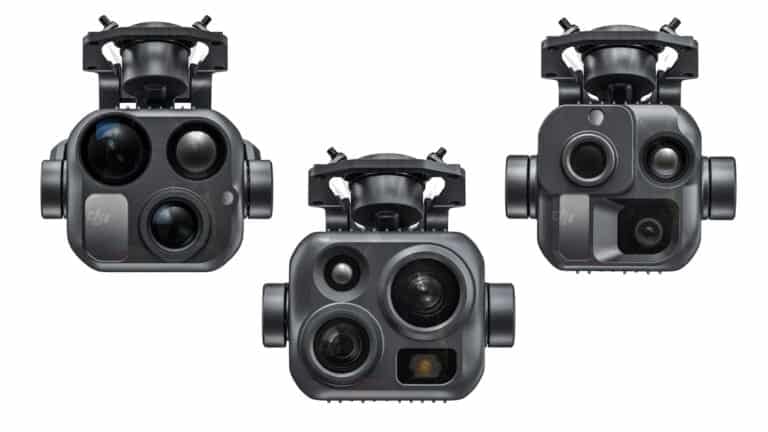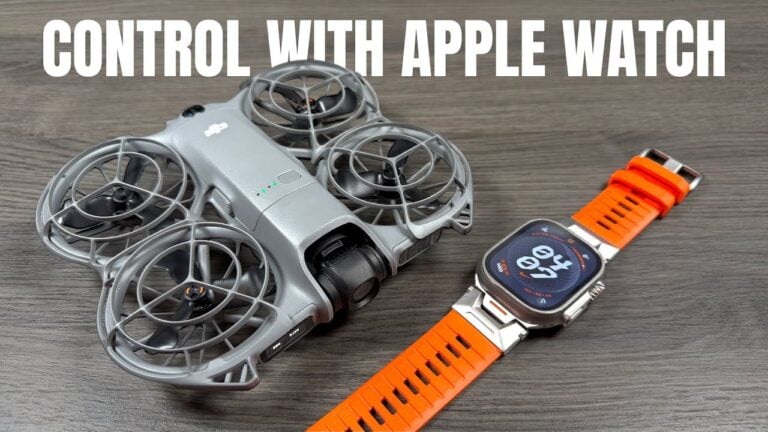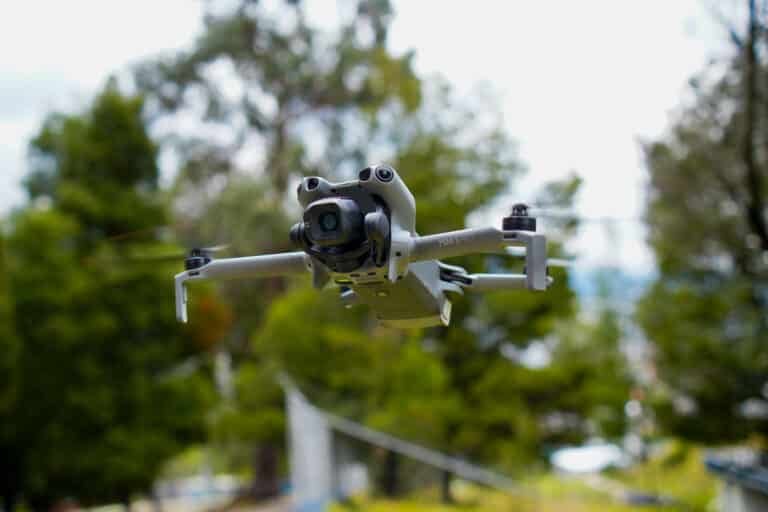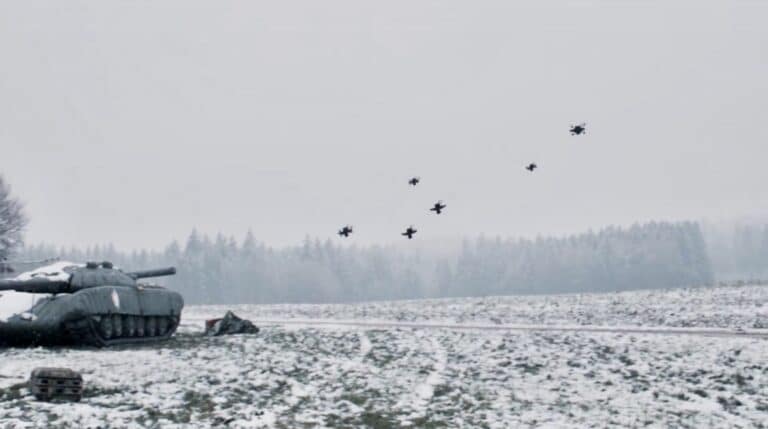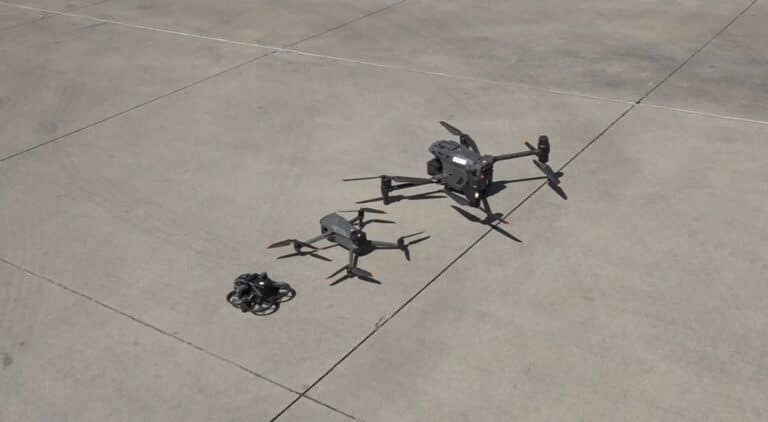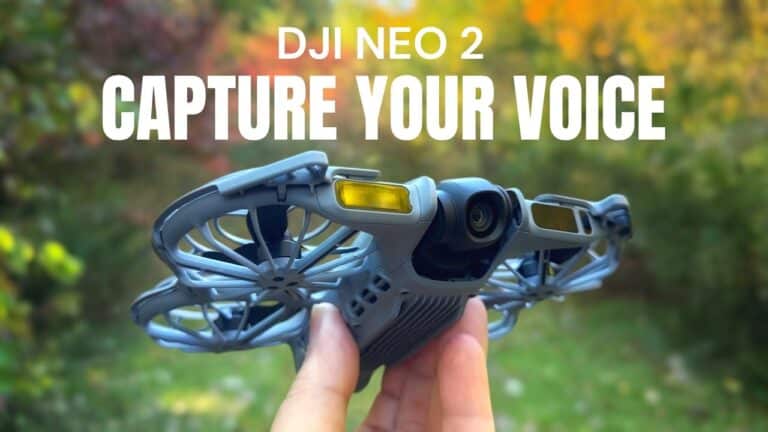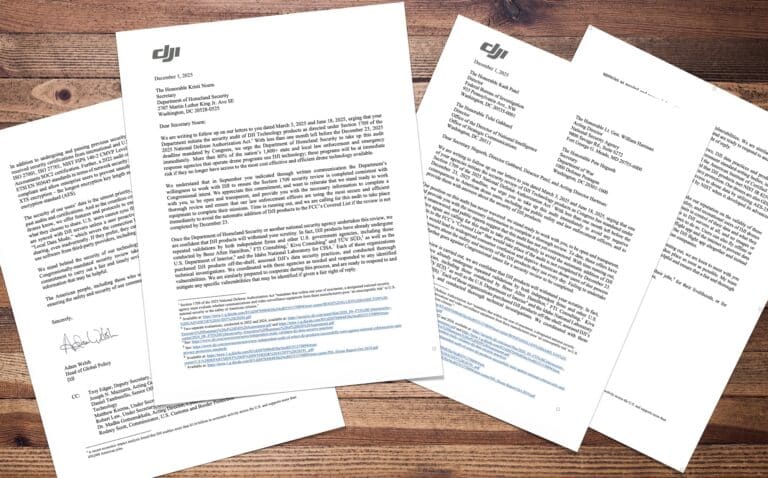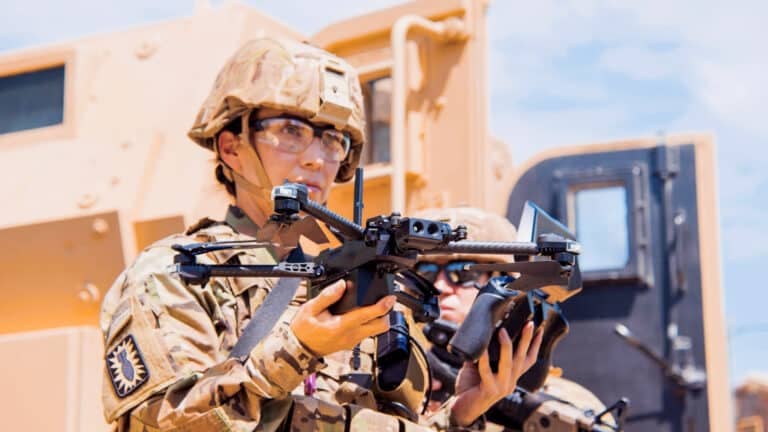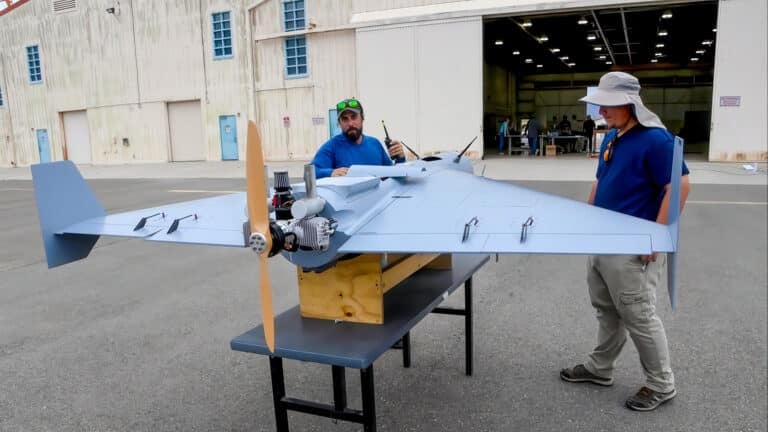Anduril’s YFQ-44A Autonomous Fighter Drone Completes First Flight, Marking New Era In AI-Powered Air Combat
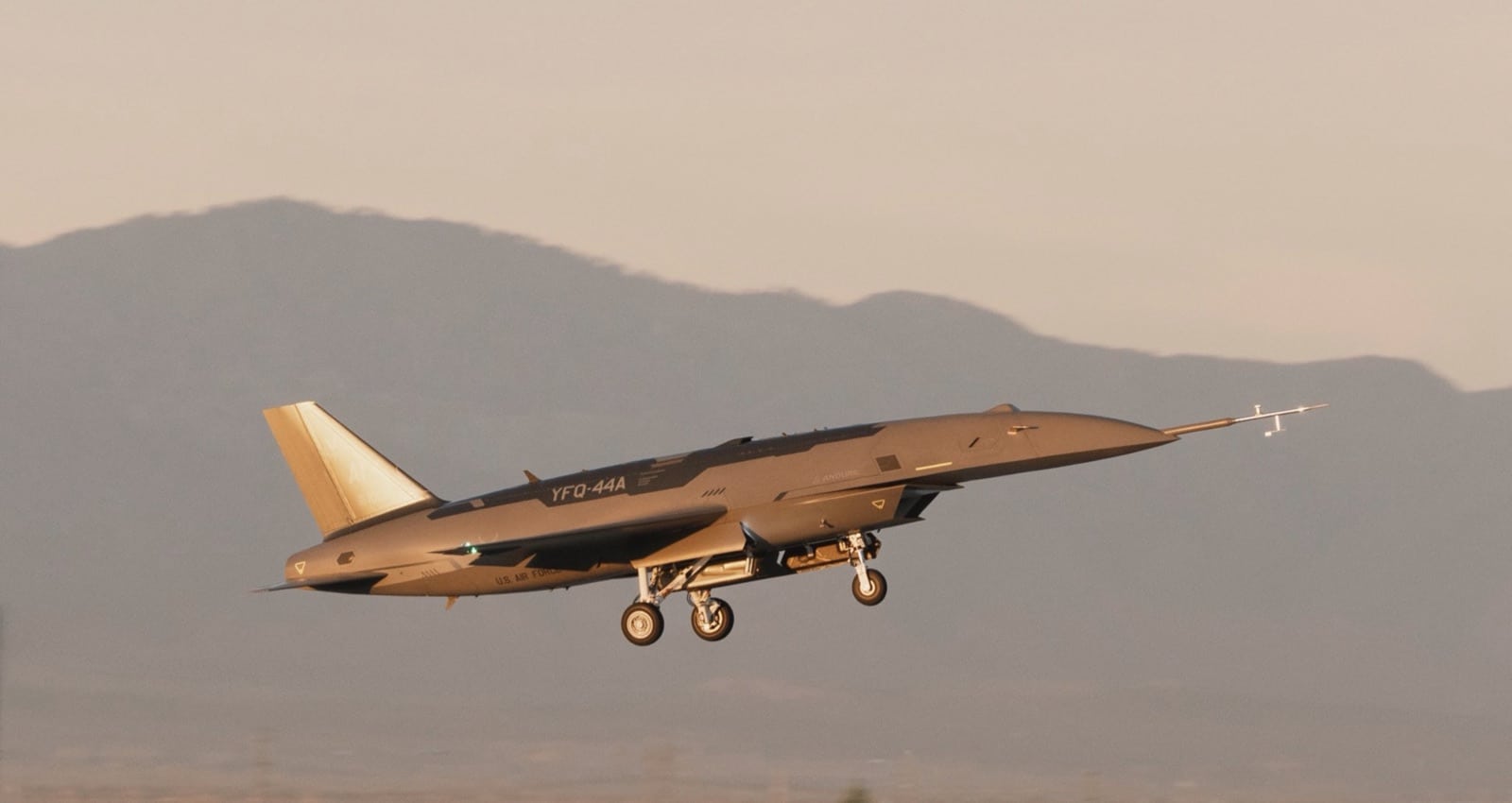
Amazon Drone Deals: DJI Mini 5 Pro Fly More Combo with DJI RC2 now for $1,099!
Anduril Industries successfully flew its YFQ-44A jet-powered combat drone for the first time on October 31, 2025, marking a significant milestone in the U.S. Air Force’s effort to field autonomous “loyal wingman” aircraft that can operate alongside fighter jets. The Los Angeles-based defense tech company and the Air Force confirmed the semi-autonomous flight demonstrates rapid progress in developing unmanned combat aircraft designed to extend the reach and lethality of crewed fighters.
The breakthrough flight positions both competing Collaborative Combat Aircraft (CCA) prototypes in active testing, with General Atomics’ YFQ-42A having flown first in August. The race to produce America’s first operational autonomous fighter drones is accelerating as the Pentagon prepares for potential conflict in the Pacific, where autonomous systems could provide critical advantages against sophisticated air defenses.
Semi-Autonomous Flight Represents Technical Leap
The YFQ-44A flew semi-autonomously at a California-based testing site, according to Anduril executive Jason Levin, who oversees engineering. The drone managed its own flight controls and throttle adjustment without human command and could land at the push of a button.
“There is no operator with a stick and throttle flying the aircraft behind the scenes,” Levin said in a press statement, emphasizing the aircraft’s autonomous capabilities from its first flight.
Anduril officials told Defense News they deliberately designed the YFQ-44A to fly semi-autonomously from the start rather than using remote piloting. This approach required additional development time to perfect the autonomy software, but engineers predict it will accelerate the testing process compared to gradually transitioning from remote control to autonomous operation.
The aircraft went from clean-sheet design to first flight in just 556 days, according to Anduril’s announcement. This rapid timeline reflects the Air Force’s push to field CCA aircraft quickly using streamlined acquisition processes that bypass traditional defense procurement bureaucracy.
Competing Designs Racing Toward Production Decision
The Air Force designated the aircraft YFQ-44A in March 2025, with the “Y” indicating prototype status, “F” signifying fighter mission, and “Q” denoting unmanned operation. General Atomics received the YFQ-42A designation for its competing design, which completed its first flight on August 27, 2025.
Both companies won contracts in April 2024 to produce prototype “loyal wingman” drones capable of serving alongside crewed fighter jets. The Air Force expects to announce a production contract for one or both designs in fiscal 2026, with plans to field more than 150 units within five years as part of a broader goal to deploy over 1,000 CCAs.
“This milestone demonstrates how competition drives innovation and accelerates delivery,” Air Force Secretary Troy Meink said in a statement. “These flights are giving us the hard data we need to shape requirements, reduce risk, and ensure the CCA program delivers combat capability on a pace and scale that keeps us ahead of the threat.”
The flight marks the latest step forward in the Air Force’s plans to field a swarm of unmanned jet-powered drones as the Pentagon prepares for potential conflict in the Pacific, where autonomous systems could operate in contested environments too dangerous for crewed aircraft.
Arsenal-1 Factory To Begin Mass Production
Anduril said manufacturing of the YFQ-44A will begin at its Arsenal-1 production facility in Columbus, Ohio, with operations expected to start in the first half of 2026. The $900 million, 5-million-square-foot facility represents Anduril’s bet on high-volume autonomous aircraft production using AI-powered manufacturing systems and off-the-shelf components.
The CCA program aims to create affordable autonomous combat aircraft that can fly alone or in groups alongside fighters like the F-22, F-35, and future sixth-generation aircraft. These drones could carry weapons, extend sensor coverage, or draw enemy fire away from crewed jets at a fraction of the cost of traditional fighters.
DroneXL’s Take
The YFQ-44A’s first flight represents more than another prototype milestone—it demonstrates a fundamental shift in how autonomous military aircraft are developed. Anduril’s decision to fly semi-autonomously from day one rather than gradually transitioning from remote control shows confidence in AI-powered flight systems that would have been unthinkable a decade ago.
We’ve covered Anduril’s rapid ascent in military drone technology extensively, from their Fury drone’s debut at the Paris Air Show to the $1.5 billion funding round that positioned the company as a serious Pentagon contractor. The 556-day timeline from design to flight reflects the startup mentality Silicon Valley brings to defense manufacturing—a stark contrast to traditional programs that take years to produce prototypes.
The competition between Anduril and General Atomics mirrors broader questions about the future of air combat. General Atomics brings decades of drone experience with platforms like the Reaper and recently celebrated 9 million flight hours across its fleet. Anduril counters with software-first design philosophy and AI integration through its Lattice operating system.
For the Air Force, fielding 1,000+ CCAs within a decade represents an audacious bet that autonomous systems can offset China’s numerical advantages in contested airspace. The Pentagon’s vision of human pilots directing multiple loyal wingmen raises profound questions about the future of air warfare, where software updates and AI training could matter more than traditional piloting skills.
What do you think? Share your thoughts in the comments below.
Discover more from DroneXL.co
Subscribe to get the latest posts sent to your email.
Check out our Classic Line of T-Shirts, Polos, Hoodies and more in our new store today!

MAKE YOUR VOICE HEARD
Proposed legislation threatens your ability to use drones for fun, work, and safety. The Drone Advocacy Alliance is fighting to ensure your voice is heard in these critical policy discussions.Join us and tell your elected officials to protect your right to fly.
Get your Part 107 Certificate
Pass the Part 107 test and take to the skies with the Pilot Institute. We have helped thousands of people become airplane and commercial drone pilots. Our courses are designed by industry experts to help you pass FAA tests and achieve your dreams.

Copyright © DroneXL.co 2025. All rights reserved. The content, images, and intellectual property on this website are protected by copyright law. Reproduction or distribution of any material without prior written permission from DroneXL.co is strictly prohibited. For permissions and inquiries, please contact us first. DroneXL.co is a proud partner of the Drone Advocacy Alliance. Be sure to check out DroneXL's sister site, EVXL.co, for all the latest news on electric vehicles.
FTC: DroneXL.co is an Amazon Associate and uses affiliate links that can generate income from qualifying purchases. We do not sell, share, rent out, or spam your email.




